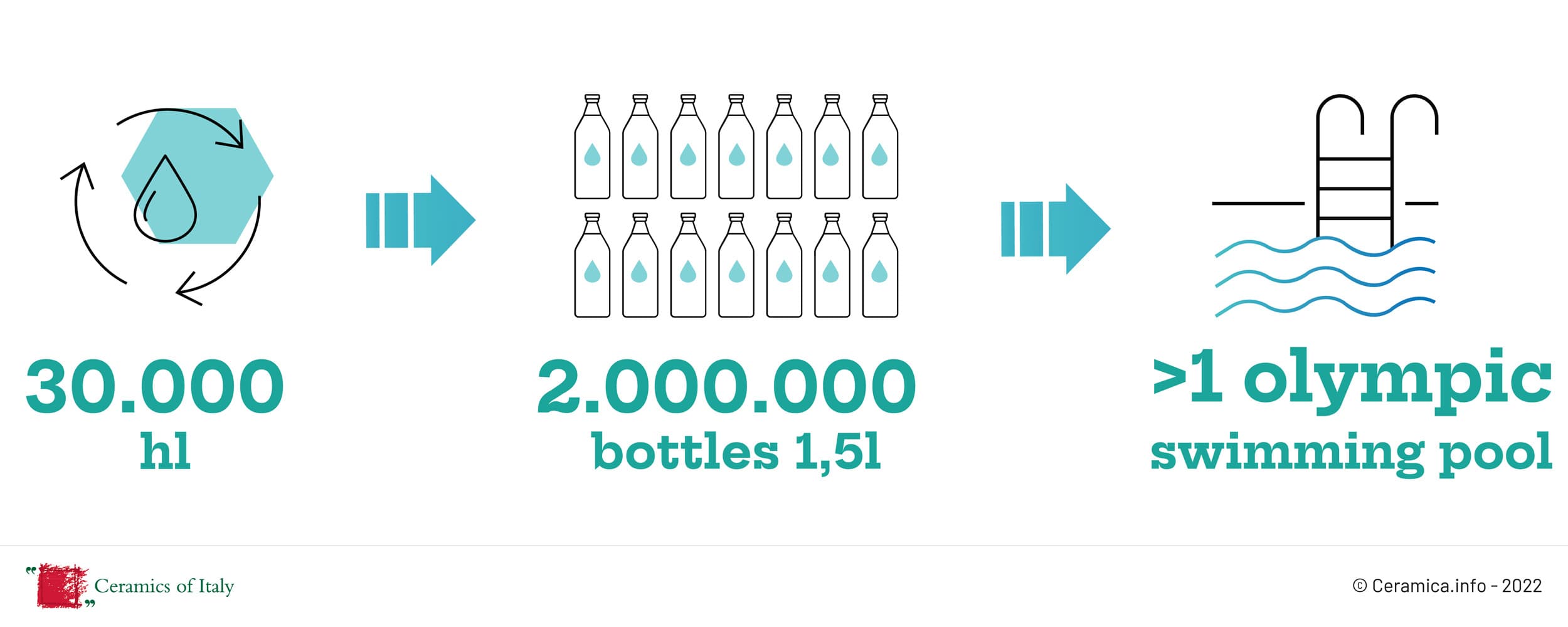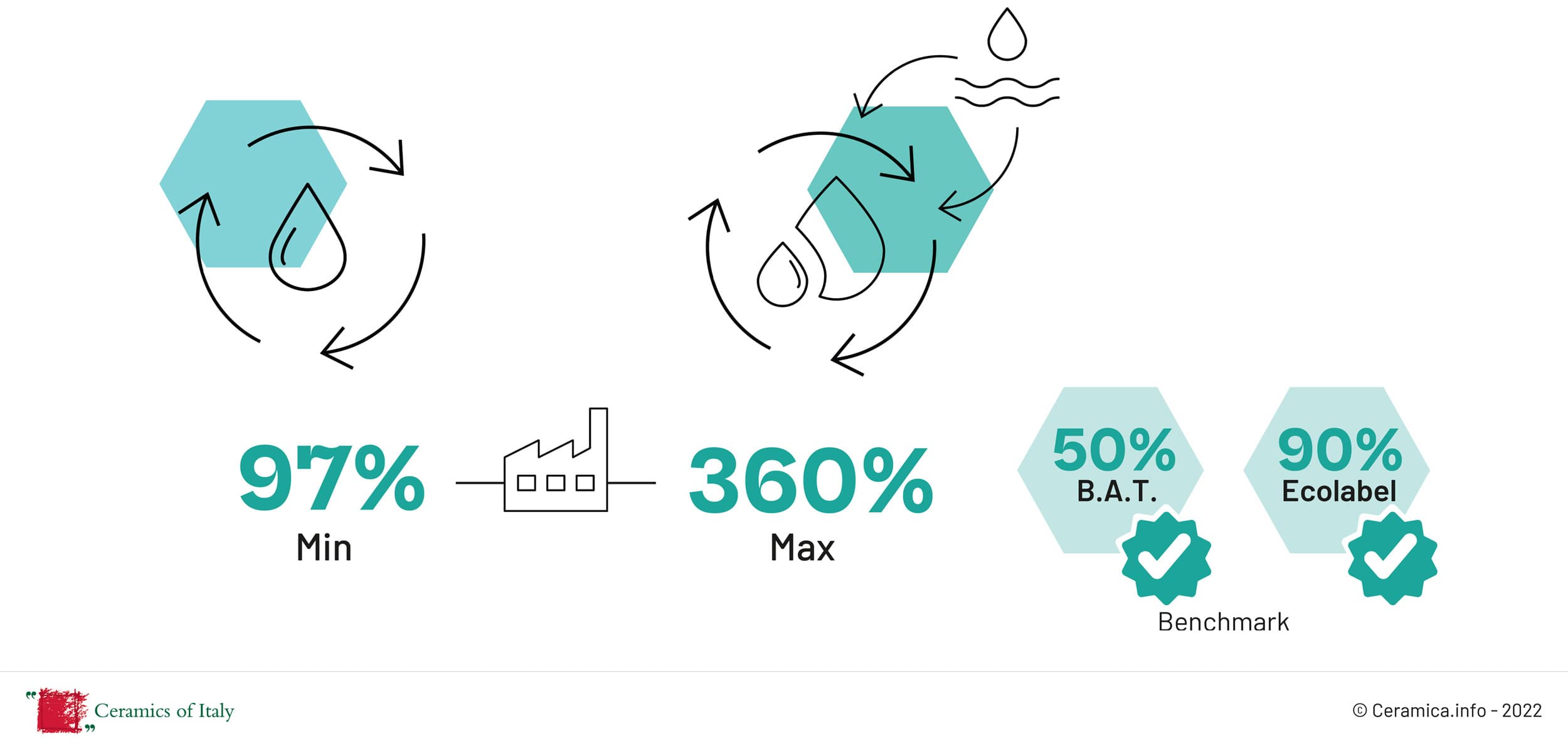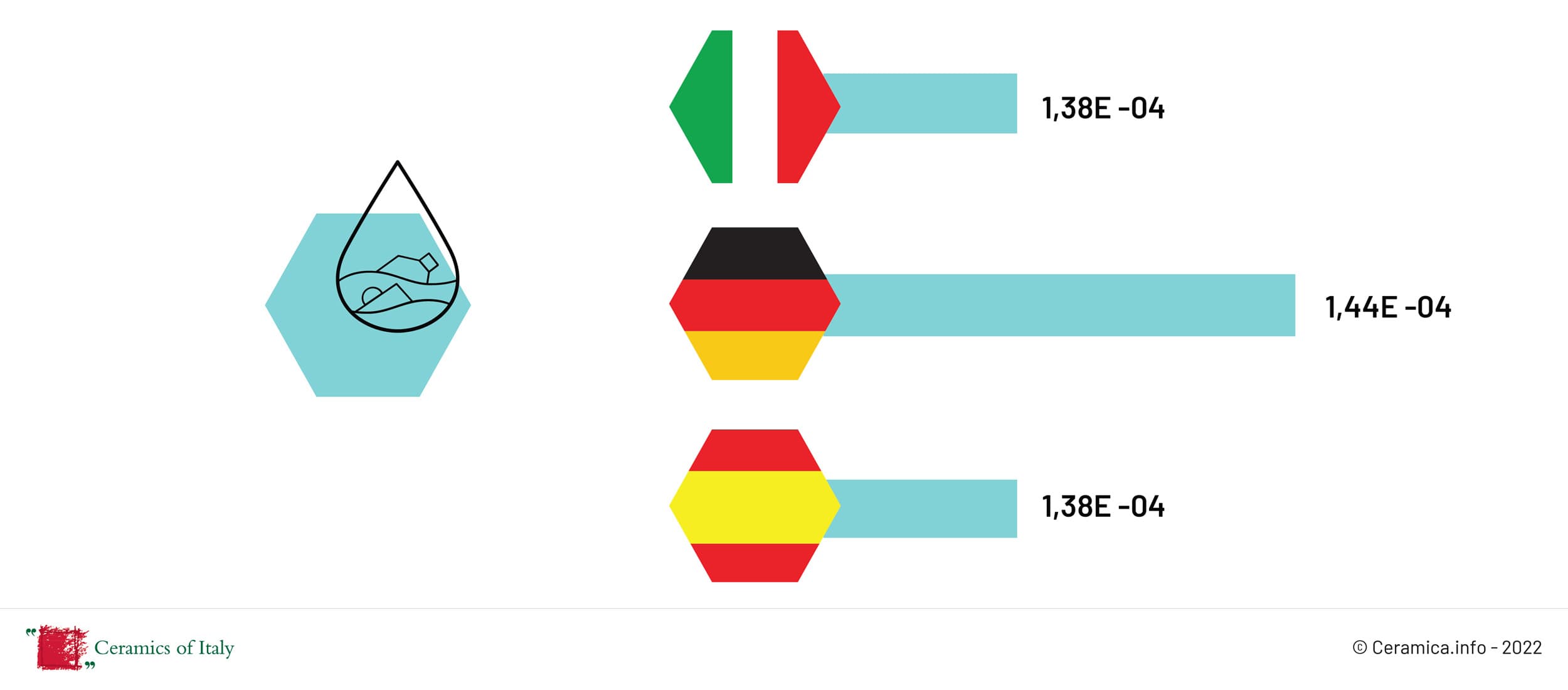Failure to manage water resources effectively can have a negative impact on the environment. The Italian ceramic tile industry has introduced numerous innovations in the field of environmental sustainability, including wastewater recycling to reduce consumption and avoid water discharges outside production sites.
Water saving

The Italian ceramic tile industry recycles wastewater
The Italian ceramic tile industry recovers 99% of wastewater from the industrial process, drastically reducing the quantity drawn from aquifers. In 2020, this type of recycling accounted for 56% of water requirements.
Furthermore, the average recovery factor is estimated at 107%. This means that companies reuse all their own industrial water along with a certain volume of external wastewater.
Specific water consumption
Percentage distribution of the factories in each class according to the indicated consumption levels.
Total recovery factor

The Italian ceramic tile industry reduces water pollution
The Italian ceramic tile industry is committed to reducing the risk of surface and groundwater pollution. In this connection, the Integrated Environmental Report for 2020 presents the analysis carried out over a sample of approximately 90 factories in the Emilia-Romagna region: 97% of the surveyed factories do not discharge water from their production processes.
A comparison between the Environmental Product Declarations (EPDs) of Italy, Germany and Spain has shown that the Italian ceramic tile industry produces low levels of water eutrophication (excessive growth of algae in aquatic ecosystems and a consequent decrease in oxygen levels).
Water eutrophication levels

Meeting the objectives of the UN’s 2030 Agenda
The Italian ceramic tile industry is attentive to the guidelines of the United Nations 2030 Agenda, which establishes global benchmarks that need to be met in order to solve critical issues relating to the three pillars of sustainable development: economics, society and environment. Launched in 2015, the Agenda set 17 goals and 169 targets to be achieved by 2030 through national and international sustainable development initiatives.
In particular, goal number 6 aims to ensure the availability and sustainable management of water and sanitation for all, reducing pollution and increasing the efficiency of water use in every sector.



 Architects
Architects
 Construction firms
Construction firms
 Dealers
Dealers
 Installers
Installers
 Public
Public


